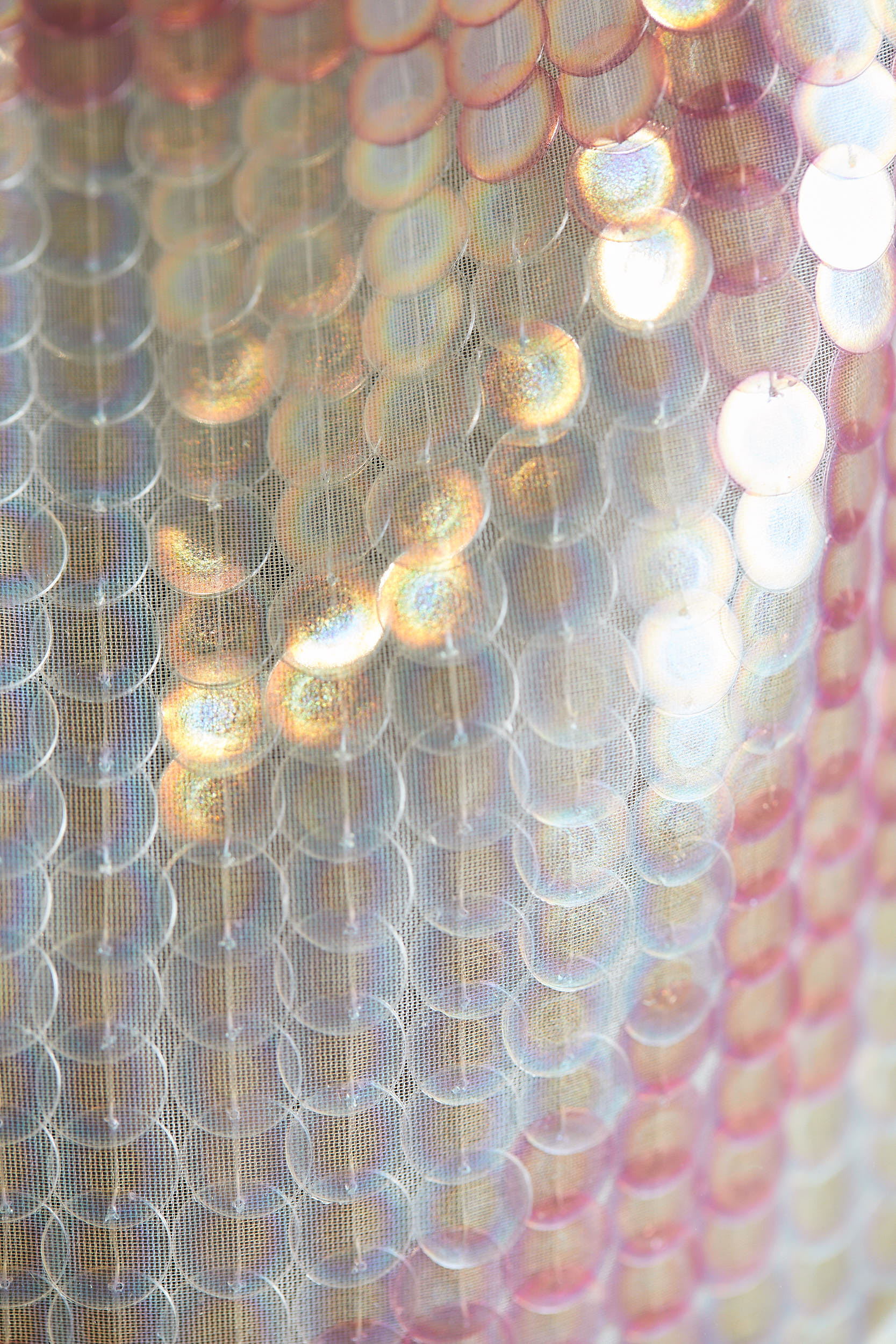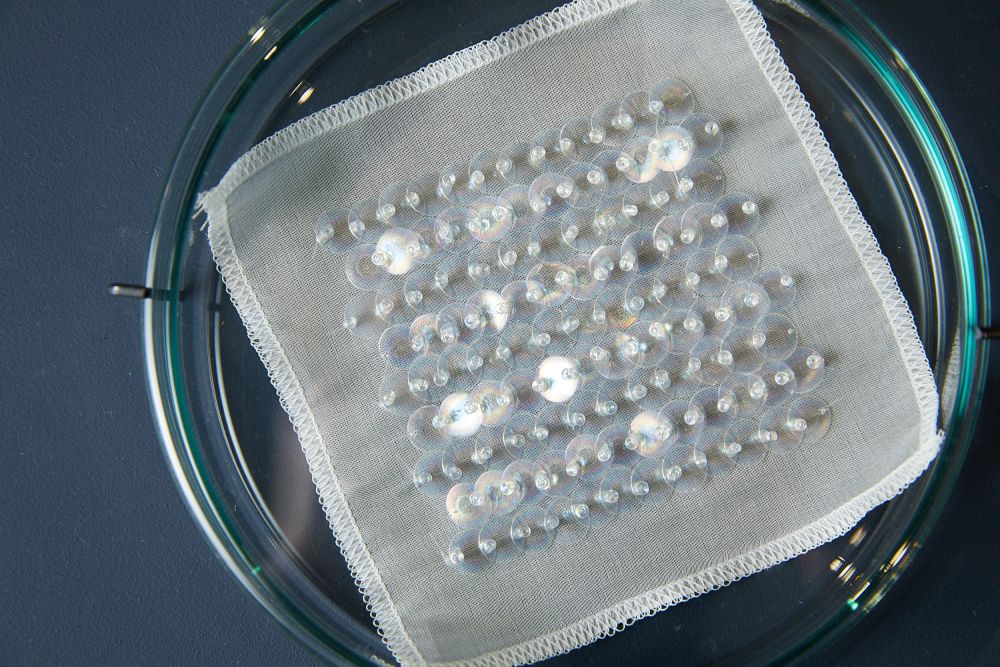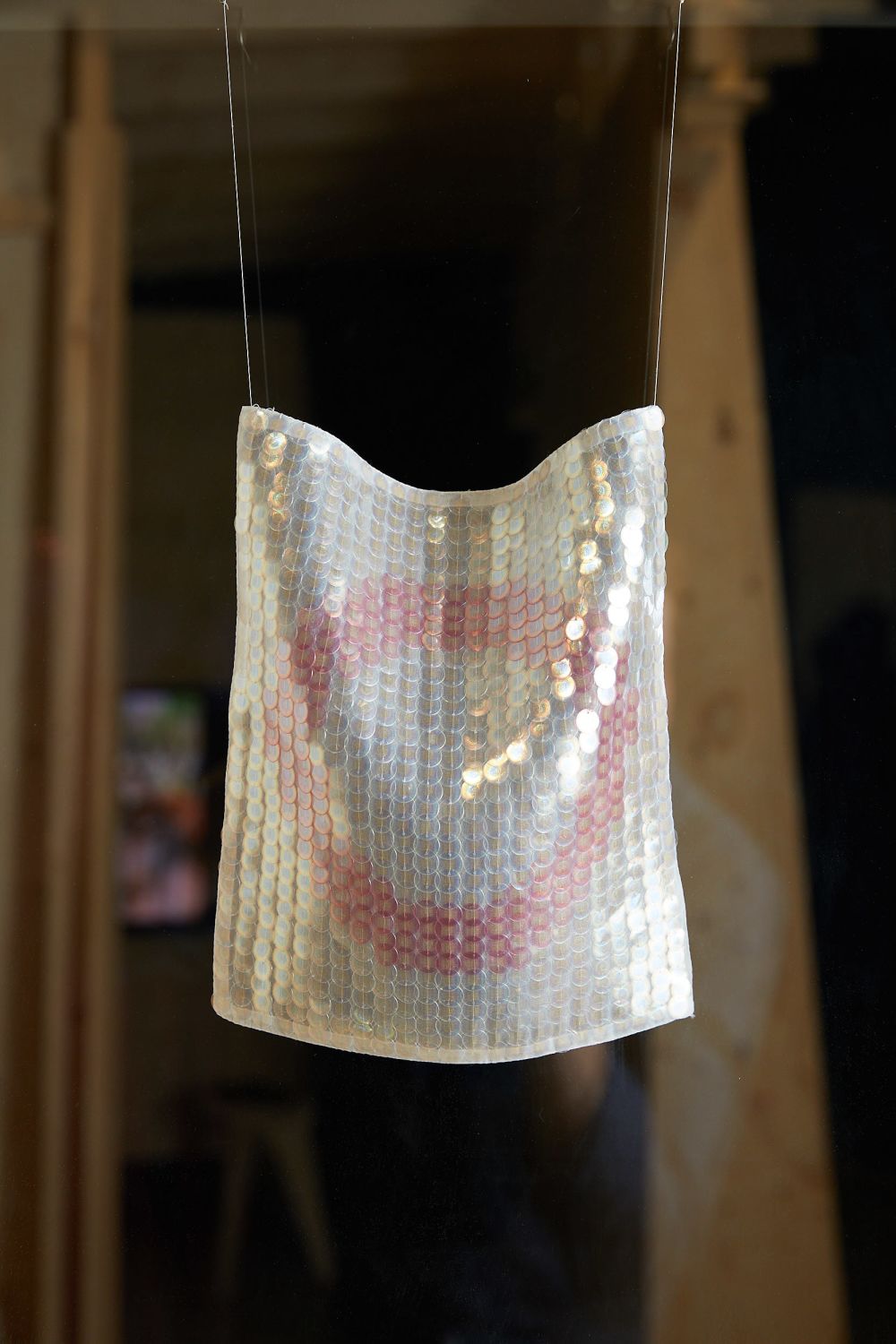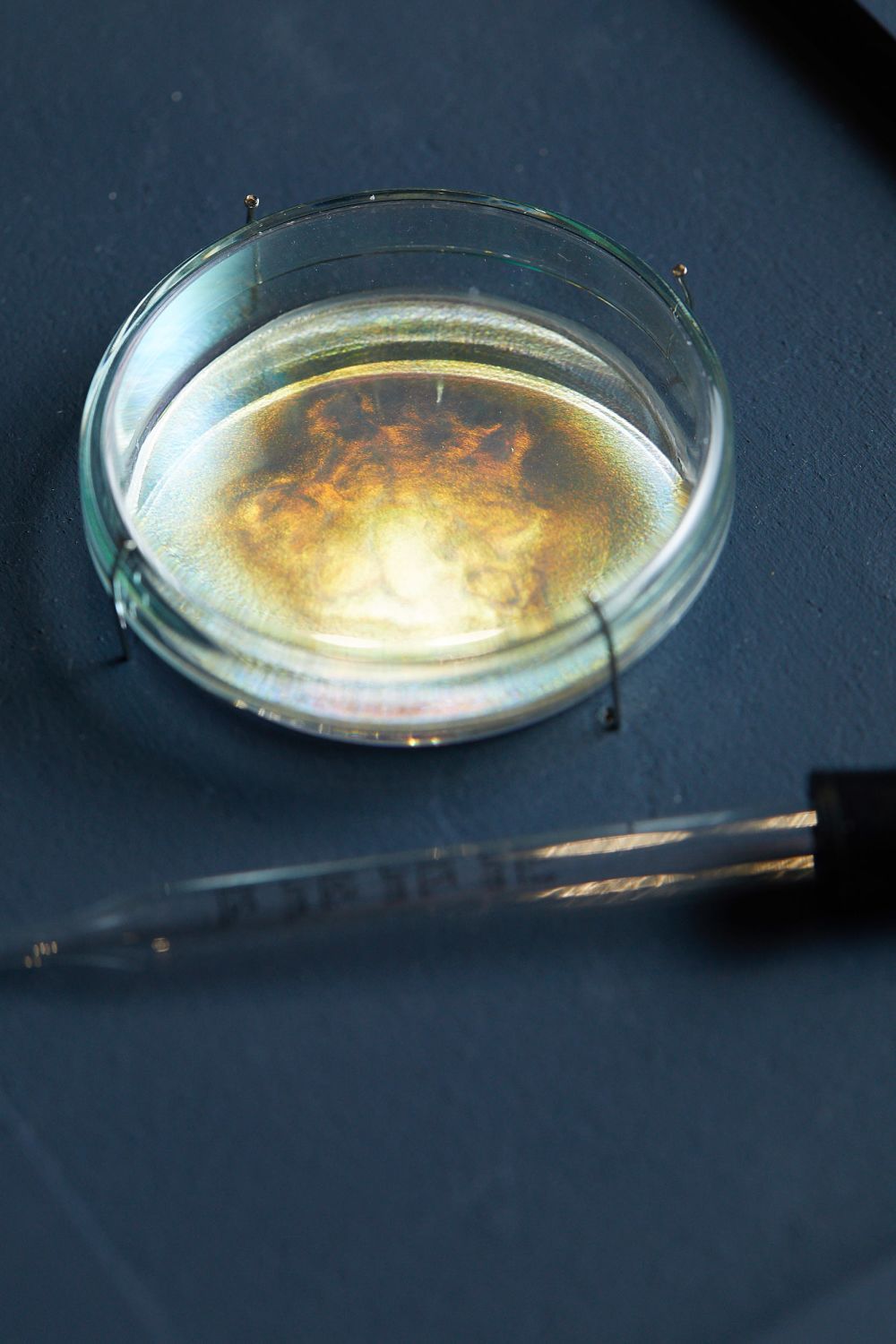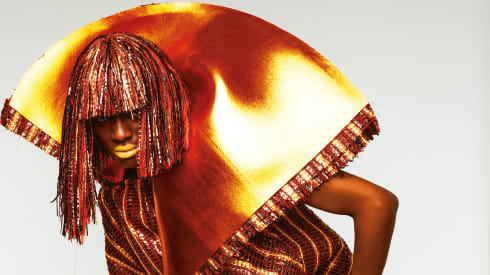On show in Designing in Turbulent Times at the Lethaby Gallery, Elissa Brunato's bio iridescent sequin offers a sustainable alternative to its traditional, environmentally-damaging predecessor. We talk to the recent MA Material Futures graduate about her project, the aesthetics of sustainability and the future role of designers.

Bio Iridescent Sequin, Elissa Brunato, MA Material Futures
In the fashion industry, beads and sequins are produced from petroleum, which is a non-renewable resource. Their use and disposal contribute to micro-plastic pollution. Working alongside material scientists at RISE (Research Institutes of Sweden), Brunato created sequins which utilise wood cellulose’s ability to refract light and form structural colours. Her alternative “bio sequin” is able to shimmer naturally without added chemicals. It is an entirely new way to approach colour and finishes within the fashion and textiles industries.
What was the experience that sparked your research?
It was working in the industry and with embroideries. Through my work in various fashion houses I was travelling to a lot of high volume manufacturing countries and I developed a deeper understanding of our fragmented supply chains. Also I was exposed to not only the concerns of users and designers but the embroidery suppliers.
It drove me to rethink what was possible. As well as being made from petroleum-based plastic that is not biodegradable, sequins often leak into our environment through all stages of our manufacture, consumer use, washing and disposal.
But, as a designer, I love the optical surfaces that objects like sequins can create. The shimmer and glitter is what attracts people to these objects and for me the starting point was exploring how these finishes could be attained naturally and sustainably.
There is a stigma that sustainable fashion and textiles has to be all beige or earth-toned due to natural pigments. I – like many people – am attracted to the finishes of plastics and shimmering coatings as they create incredible visual effects! I was longing to explore a modern approach to sustainability and breaking down pre-conceived aesthetics of the term.
Gallery
If you could change one thing in the world to get us to one-planet living, what would it be?
At some point society lost the sense of understanding that our things, our clothing and our surroundings are drawn from the earth's resources. Those resources have limits and are all part of an intricate system on which we depend. We are now consuming at a rate that is seriously testing the limits of this system without comprehending this information.
So with this in mind, If I could change one thing it would be people's disconnected understanding between our living environment and consumption. Hoping that this in turn would change our behaviour.
What is the role of designers in society's collective push for a more sustainable way to live?
If we are going to make a collective push for a more sustainable way to live we need to see far more honesty and transparency about companies' supply chains and processes. There needs to be far more collaboration to bring information forward so that designers can be better informed about environmental implications of processes and material origins. Perhaps the designer's role lies in demanding this transparency and striving to breakdown traditional systems where they have harmful environmental impact.
Elissa Brunato won the inaugural Creative Review Award for Innovation at this year's MullenLowe NOVA Awards and was one of the five winners of the Maison/0 Green Trail 2019. Designing in Turbulent Times, a Central Saint Martins, LVMH and Maison/0 exhibition, is at the Lethaby Gallery, 14 September – 27 October.
